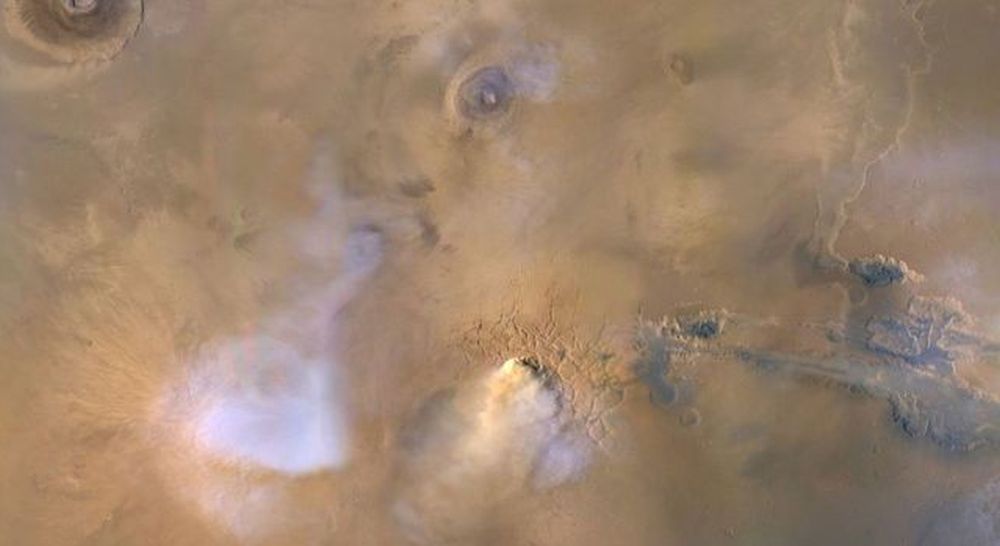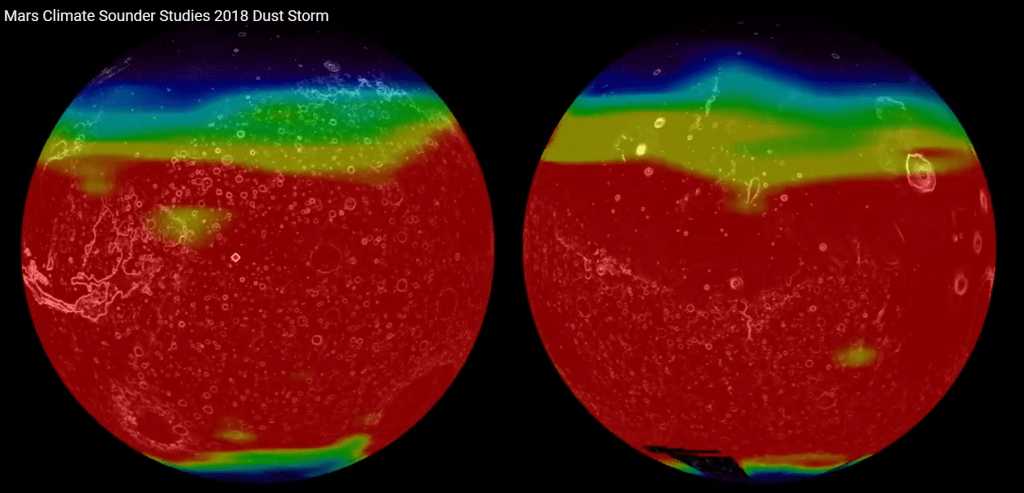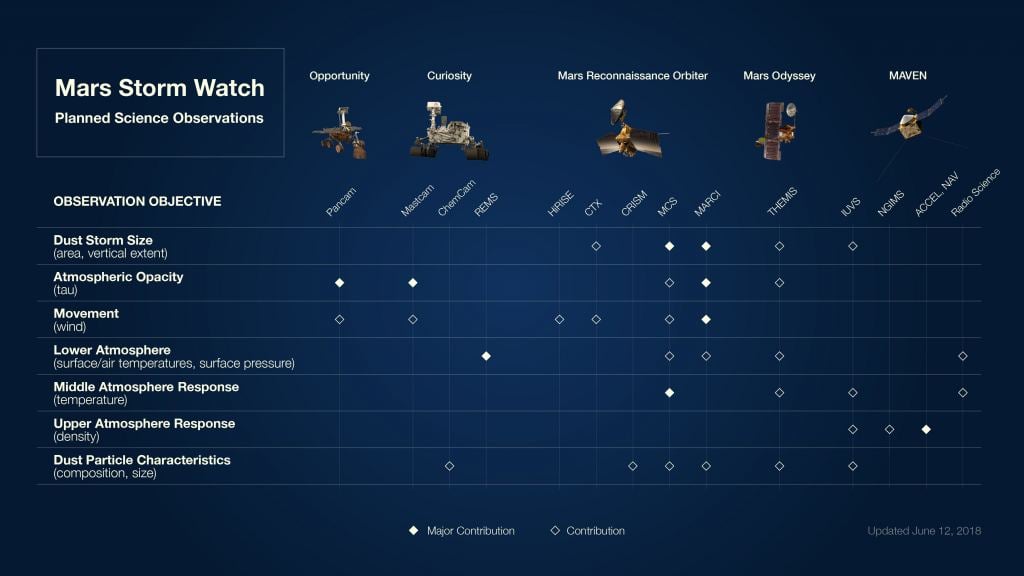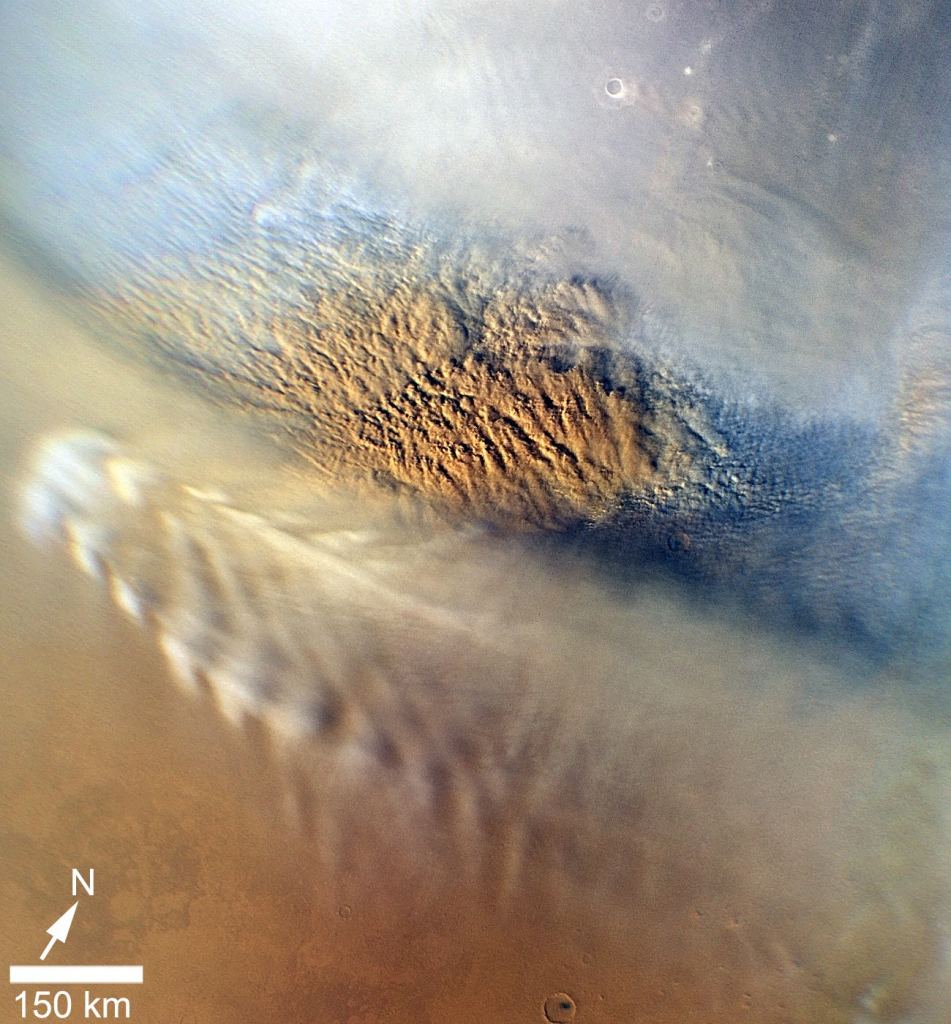When a huge dust storm on Mars—like the one in 2018—reaches its full power, it can turn into a globe-bestriding colossus. This happens regularly on Mars, and these storms usually start out as a series of smaller, runaway storms. NASA scientists say that these storms can spawn massive towers of Martian dust that reach 80 km high.
And that phenomenon might help explain how Mars lost its water.
During the last global dust storm in 2018, which spelled the end of the Opportunity rover, orbiters kept a close eye on Mars, getting a good look at the storm's life-cycle. A dust tower starts out at the Martian surface as an area of rapidly lifted dust that's about the same size as Rhode Island. The tower that rose during the 2018 storm rose as high as 80 km (50 miles) and by that time it was about the size of Nebraska. Once a storm like this finishes rising and starts to decay, the tower can form a layer of dust 56 km high (35 miles) and can be the same size as the continental US.
A new research paper sheds light on the dust tower phenomenon. The paper is published in Journal of Geophysical Research: Planets. It's titled " Dusty Deep Convection in the Mars Year 34 Planet-Encircling Dust Event." The lead author is Nicholas Heavens of Hampton University.
Mars' global dust storms are unique; there's nothing like them on Earth. They occur about once every three years. "Global dust storms are really unusual," said Mars Climate Sounder scientist David Kass of JPL, a co-author of the paper. "We really don't have anything like this on the Earth, where the entire planet's weather changes for several months."
Dust towers can appear throughout the year on Mars, not only during global dust storms. But during the 2018 storm, NASA's Mars Reconnaissance Orbiter (MRO) saw something different. "Normally the dust would fall down in a day or so," said Heavens. "But during a global storm, dust towers are renewed continuously for weeks." In some cases, multiple towers were seen for as long as 3 1/2 weeks.
The dust towers that form during these storms—and they can even form when there are not global storms—are warmed by the Sun and rise high into the atmosphere. Scientists think that water molecules that form Mars' wispy clouds get trapped in all that dust, and are carried high into the atmosphere. It's similar to how a thunderhead or cumulonimbus cloud forms during a powerful storm on Earth. But at high altitudes on Mars, solar radiation breaks apart the H2O molecules. These dust towers might explain, at least partially, how Mars lost its water over billions of years.
The study of the global dust storms is relatively new. So far, scientists have studied less than 12 of them, and they're far from certain what causes them. But scientists at NASA's Mars Climate Modelling Center are working at trying to understand them. Their website says "Our ongoing research addresses dust lifting processes, the radiative-dynamic feedbacks between airborne dust and the atmospheric general circulation, and the interactions between surface dust reservoirs and the observed Martian dust cycle." Their efforts will make us of the MRO and its climate sounder, NASA's MAVEN orbiter, and the older NASA Odyssey Orbiter.
The MRO has a suite of instruments on board, including the Mars Climate Sounder (MCS,) a heat-sensing instrument that can see in both the infrared and visible light spectra. MCS can measure the temperature, humidity, and dust content in Mars' atmosphere. It produces data showing how the Martian atmosphere circulates over time.
Over time, the MRO and its Climate Sounder will gather more data on the Martian climate in general, and on global dust storms and their towers specifically. NASA's MAVEN (Mars Atmosphere and Volatile Evolution) orbiter is also studying the Martian atmosphere, with a specific focus on how Mars lost its water and atmosphere over time.
NASA's Odyssey orbiter has been at Mars for 18 years. Its THEMIS (Thermal Emission Imaging System) instrument also keeps track of Mars' surface temperature, atmospheric temperature, and the amount of dust in the air.
With all of these instruments watching Mars, scientists are building a more thorough understanding of Mars' atmosphere and climate. Hopefully, they'll one day answer the question of what happened to Mars to turn it into the cold, dry place it is now.
More:
- Press Release: Global Storms on Mars Launch Dust Towers Into the Sky
- Research Paper: Dusty Deep Convection in the Mars Year 34 Planet?Encircling Dust Event
- Press Release: Dust Storms Linked to Gas Escape from Mars Atmosphere
 Universe Today
Universe Today



